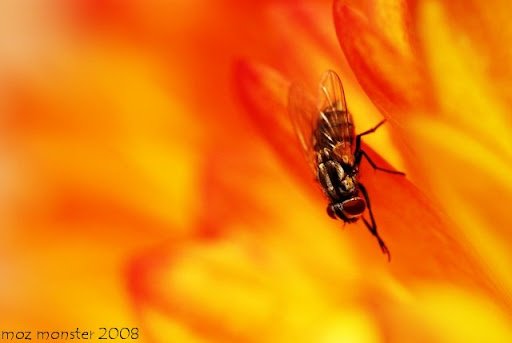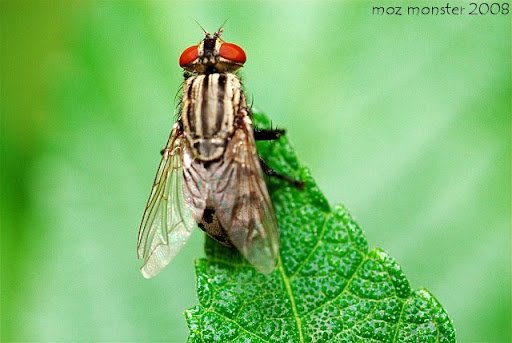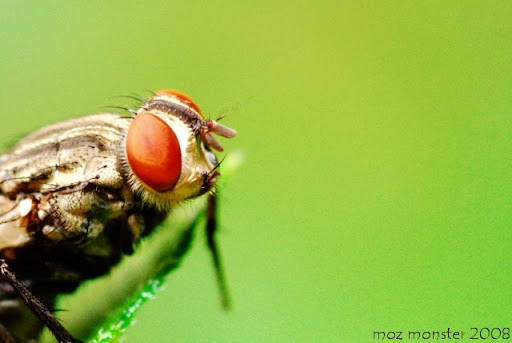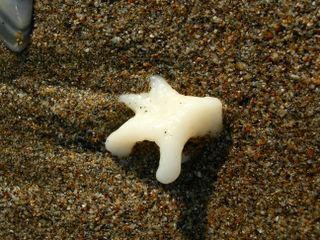Macro: Stories from a fly

Orange is my world
f/16, 1/125 s, i-TTL Fill Flash, Tamron 1:1 90mm macro lens, Nikon D80

Top Fly
f/16, 1/125 s, i-TTL Fill Flash, Tamron 1:1 90mm macro lens, Nikon D80

Bug's Eye 1
f/16, 1/125 s, i-TTL Fill Flash, Tamron 1:1 90mm macro lens, Nikon D80

Bug's Eye 2
f/16, 1/125 s, Tamron 1:1 90mm macro lens, Nikon D80
It's been a while since I last posted any bug photos, so I thought this would be a good time to put one up. The truth is, I haven't been bug chasing as actively as I have previously, and I've been quite happy to do more landscapes.
However, I had the chance to photograph one of the harder insects to shoot, the housefly. Extremely sensitive to movements, and ultimately finicky, it doesn't take much for a fly to, well, fly off. And once they're gone, they're not like dragonflies which has a tendency to return to its original spot. They just move on !
One trick I've been told to keep them still is to spray a fine mist of water at them to fool them into thinking it's raining. I haven't tried it yet, but I'm not sure about it - if there's rain coming, I'm sheltering !
The first picture, Orange is my World, is a favorite. Taken against a new pot of daisy my dad just bought home, the fly appears to be from another planet with all the hot orange background against it. In a technical sense, this was a bit of a challenge as well for a couple of reasons. The amount of blurred background had to be just right - if I showed too much details from the flower, I think the effect wouldn't be the same. This meant I had to make sure my f/ stop wasn't too narrow. But that in turn created another problem - the fly's a very dark color, I had to meter correctly to ensure I didn't create blown highlights by metering solely on the fly itself.
The next photo, Top Fly demonstrates a common problem with macro. I'm actually using a macro lens, and I was photographing the fly at 1 time magnification. What that means is the why actually in actual size on my camera's sensors. High magnification problem creates what is known is a shallow depth of field (DOF), which really means only a small area of the photo is in focus. Notice how some part of the abdomen and the right wing is not in focus. Try as hard as I could, and I'm still left with some area out of focus. There are was to counter this, we'll get to that in another post.
The 3rd and 4th photos, Bug's Eye 1 and Bug's Eye 2, is to demonstrate the difference when photographing with and without flash. Bug's Eye 1 was photographed with an external flash, the Nikon SB-600. The flash was diffused with a flash cap to create better lighting conditions. Notice how much more details appear when external flash is used. Also, the photo with flash appears to have less noise. All other settings are the same. Goes to show how important external diffused flash is when doing macro photography.

2 comments:
manyak cantik.
The fly can pose for u huh?
This is an educated fly who can recognise lenses and differentiate it from newspaper :P
and yeah, the fly has eye lashes !!
I like the 2nd photo because of the leaf.
Post a Comment